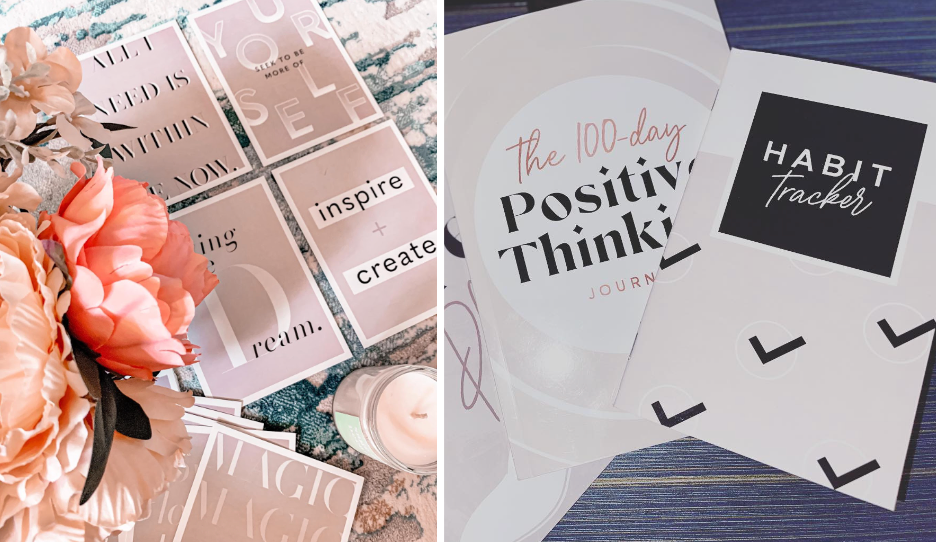How do you become the next-level version of yourself? How do you make the progress forward that you’re looking for?
It’s all about how your brain can rewire and that takes some self-coaching. You can literally take control of your life and shift your mind (or rewire it), to not feel stuck with what doesn’t positively serve you.
It starts with your neuroplasticity.
That’s your mind’s ability to change when exposed to different environments and experiences. It’s the “capacity of neurons and neural networks in the brain to change their connections and behavior in response to new information, sensory stimulation, development, damage, or dysfunction”.
You’ll hear experts talk about this from vision board gurus to mental wellness professionals. Why? Because the expansion of neuropathways leads to healing which leads to more room for you to live the life you deserve.
Practices for neuroplasticity are even known to help recover from traumatic brain damage and injuries, improve on your memory, and more.
But it’s not a one and done scenario!
Even Positive Psychology notes that while neuroplasticity can be used to manage and treat ailments (including anxiety), it is a process. It takes some time for the positive benefits to reveal themselves.
“These more permanent brain changes can be achieved through adapting and changing thought patterns, through recall and memory patterning, breathing exercises, eye patterning, modifying postural habits, increasing body awareness, and targeting sensory perception.”
What practices can change those patterns?
There are numerous practices that can rewire your brain with dedication and continued practice. We’ve narrowed it down to 5 practices that can rewire your brain in a positive direction for self love and manifesting journeys.
1. Gratitude Journaling
This practice is all about combating (or rather living with) negativity bias. Psych Central expands on negativity bias, or the tendency to lean to the negative, in their look at neuroplasticity practice of gratitude. They share that a positive psychology expert at the University of Edinburgh in Scotland named Mark Hoelterhoff, PhD says, “From an evolutionary perspective, the brain developed a heightened sense of awareness to potential threats or risks in order to stay safe.”
To shift out of the negativity bias, you can use a Gratitude Journal on a daily basis to help train your mind to focus on what you have rather than what you don’t have.
According to Christina Karns, a research associate in the psychology department at the University of Oregon, their research shows that women who write in a gratitude journal are more likely to see positive benefits than women who write in a neutral journal.
Give this practice a go with the 100-Day Gratitude Journal from Lovet Planners! It’s undated so there’s no stress if you accidentally miss a day. Just hop back on the gratitude train.
2. Making & Using a Vision Board
There is a neuroscience to manifesting with vision boards and experts share that consistent us of a vision board–visualizing and spending time with your visions–can expand your neuropathways. And at any age, too! That’s the power of neuroplasticity. It’s the ability to learn and change, but at times, it starts with the intent.
That’s where vision boards become useful. When you visualize with a vision board or dream board, you keep your focus in line and your goal at the forefront of your mind.
There’s just one problem: vision boards usually are huge and on a poster board at home. Give yourself more access to your vision board by using the Vision Board Planner or Manifesting Bundle from Lovet Planners.
3. Playing Video Games
Surprised to see this here? Video games–including mobile app games–are great practices for neuroplasticity. The benefits are plentiful. They include:
- Improvement of brain motor functions
- Improved memory
- Improved reaction time
- Interpersonal development through teamwork and cooperative games
- Decision-making and critical thinking
4. Managing Access To YOU & Self Care
The Art of Slowing Down is vastly underrated. Every day, our minds consumes so much information–sight, sound, and all–and it can stir and agitate ADHD, anxiety, and more. So when we say “managing access” that means moderating how accessible you are to others.
That can be making the choice to narrow down to one messaging app, or maybe you give yourself permission to not immediately respond to text messages as soon as you receive them. Giving yourself the opportunity to slow can be rejuvenating.
Take control of your self care routine with the help of the 12-month undated Self Care Planner from Lovet Planners.
5. Writing & Repeating Affirmations
Claude Steele, an American social psychologist and a Professor of Psychology at Stanford University, proposed the self-affirmation theory. In the desire to maintain a positive self-image, people overcome specific threats to the self by affirming something equally important, yet unrelated, to restore a sense of self-confidence and worth without facing the specific threat at hand.
Take these 5 different practices or any combination of one or all and stick with them every day. If you need a hand, go for the Habit Tracker Notebook. It’s a great way to track your daily checkin with the practice you choose.
P.S. - We send out curated intentions every month to our newsletter subscribers so make sure you’re signed up to receive updates via email. CLICK HERE NOW.




![Manifestation Memo Pad [DAILY]](http://lovetplanners.com/cdn/shop/files/Manifestingjournalplanner.png?v=1704323635&width=300)








